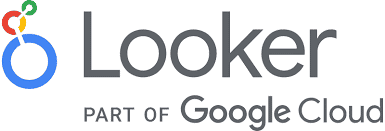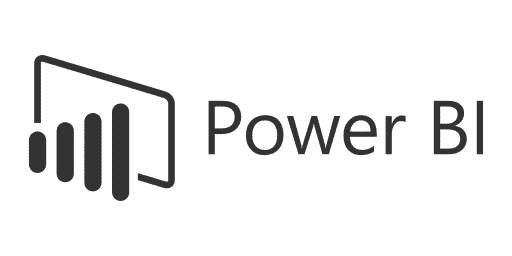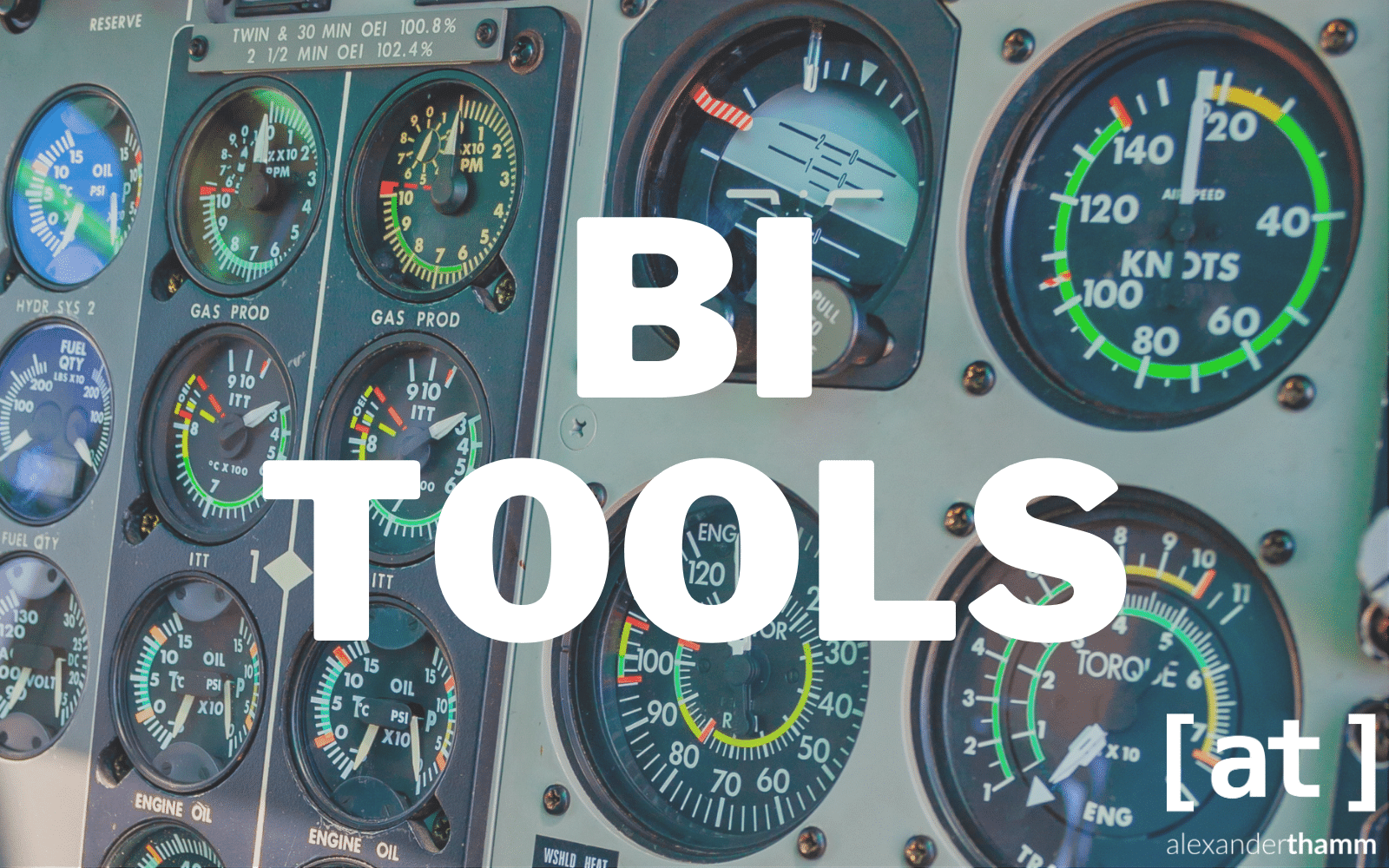Data to Action: This is what BI & Analytics tools enable. Every aspect of a company produces data. You should also use it: With the help of business intelligence, data can be transformed, evaluated, reports and dashboards created and analytics applications programmed. This way, you can keep an overview, quickly answer specific questions in a data-driven way and share your insights with others. We have compiled 10 tools that make it possible for both experts and business users to generate interesting insights from their data.
Inhaltsverzeichnis
Rank 10 - Looker

Looker puts an end to traditional BI approaches: The approach of Looker, part of the tech company Google, is to enable every user in the company to perform data analyses themselves with a high level of detail. Looker relies heavily on a central and virtual metadata layer created with LookML, a proprietary data description language. Business users access the data through this virtual layer and can perform ad-hoc analyses through a point-and-click interface. The platform enables business users to generate actionable insights and quickly arrive at meaningful and decision-supporting results through ad-hoc analyses.
Rank 9 - TIBCO

TIBCO's Business Analytics portfolio offers comprehensive functionality to support a wide range of analytics scenarios. The vendor began developing BI & Analytics solutions in 2007 with the acquisition of Swedish software provider Spotfire. The result of this merger, TIBCO Spotfire, is a comprehensive BI solution that focuses heavily on visual and advanced statistical analysis. Interactive dashboard applications can be created and used with live data. By embedding complex statistical methods and models, data scientists can perform predictive analytics using the S+ and R programming languages.
Rank 8 - Pyramid Analytics

The relatively young Dutch company Pyramid Analytics offers a BI & Analytics platform that is tailored to the needs of business users. Analyses can be carried out and dashboards created quickly and intuitively, regardless of the end device. With the help of its own query engine, data can be queried across different databases and quick in-place analyses can be carried out. Thanks to the open architecture, Pyramid Analytics can be rolled out and used on-premise, in the cloud or hybrid. There is also something for experts: With the help of APIs, BI & Analytics applications can be embedded and used beyond classic BI use cases. In addition, R, Python, MLLib and Tensorflow integrations make it possible to create advanced analytics applications.
Rank 7 - Oracle Analytics Cloud

Oracle Analytics Cloud includes data preparation, data visualisation, enterprise business intelligence and scenario management for business users. Development and delivery of dashboards, formatted reports, ad-hoc reports and self-service discovery/analysis - all in one platform. All this is possible not only in the cloud but also on-premise: The Oracle Analytics Server offers companies all the functions of the cloud platform - only locally. For advanced users, ready-made algorithms for ML applications are also integrated into the Oracle Analytics Cloud. Further, scripts in R and Python can be embedded for custom advanced analytics and ML algorithms embedded in the Oracle database can be used.
6th place - SAP Analytics Cloud

For those who are already in the SAP cosmos, a stopover in the Analytics Cloud is worthwhile. The cloud-native platform offers live connectivity to well-known services such as SAP HANA, Data Warehouse or BusinessObjects and can even be integrated into these as a hybrid cloud solution. With analytics functions geared towards business users and smart insights via NLQ (Natural Language Query) and NLG (Natural Language Generation), dashboards, reports and analytics applications can be created quickly.
Rank 5 - IBM Cognos Analytics

IBM's BI and analytics solution offers the complete package: dashboards, reporting, data modelling and analysis in a web-based, integrated application. Cognos Analytics is mainly used by larger companies and therefore offers the possibility of many users and the processing of large amounts of data. With a kind of search engine, even business users can quickly obtain data-based answers and visuals to their questions. Furthermore, experts can use Jupyter Notebooks to prepare, transform and analyse data and create dashboards and applications more flexibly.
Rank 4 - MicroStrategy

As one of the best-known vendors in the field of Analytics & BI worldwide, MicroStrategy is considered a pioneer. The vendor was the first to release a fully integrated product for creating formatted reports, dashboards and interactive data discovery in a single solution, on-premise and in the cloud. With a single platform for reporting, analysis, analytics and dashboards with robust performance in large environments and over 200+ connectors - even for tools such as Power BI, Tableau, etc. - business insights can be gained at a rapid pace. With the help of "dossiers", reports or dashboards can be created similar to books and used interactively. The "HyperIntelligence" function also offers the possibility to find and display contextual information in a customisable way.
3rd place - Qlik Sense

Qlik Sense is Qlik's latest platform for self-service analytics. Qlik Sense uses a technology called "active intelligence", based on continuous intelligence through real-time, up-to-date information. With the help of data pipelines and dynamic business logic, analyses can be evaluated in real time. With simplified data exploration and search, intelligent visualisations and data preparation functions, Qlik makes BI and analytics easier for all types of users. On the technical side, Qlik uses a fast in-memory engine for short processing times as well as intelligent data preparation and transformation functions. Custom and complex data transformation functions are available to experts, as well as scripting in R and Python.
Place 2 - Tableau

Tableau offers not only graphs and visualisations - but also live visual analytics. With an easy-to-use interface and drag-and-drop, users can quickly identify trends in data, create charts and visuals. With many connectors to various databases and services, data from almost any source can be analysed. In addition, data blending can be used to create a uniform database and thus generate more insights. Robust and fast: Tableau offers good performance - even in large environments with high data volumes.
1st place - Microsoft Power BI

Business-oriented, easy to understand and quick insights: Power BI is one of the top players in the field of business intelligence and provides comprehensive analytics, intelligence and visualisation functions. Those familiar with the Office ecosystem will quickly find their way around and can easily integrate their reports into other applications in the Office and Azure universe. Built-in AI-based services such as Augmented Analytics, NLQ and Anomaly Detection can be used to generate and evaluate smart reports, insights and forecasts. With Python and R, Power BI also supports two established programming languages to transform the underlying data beyond the PowerQuery editor and create small individual ML applications.






0 Kommentare